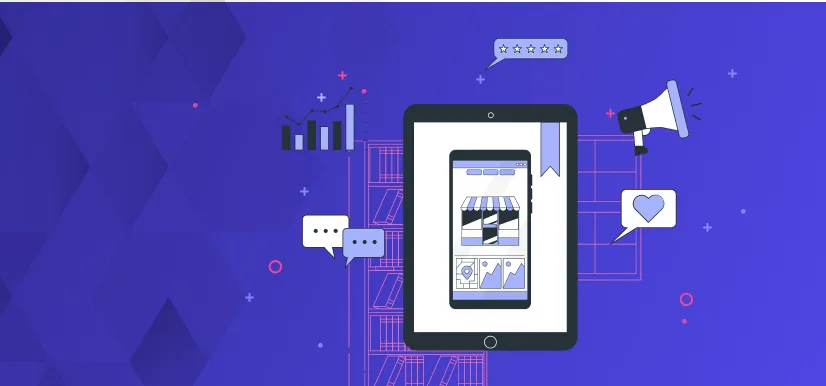- Personalization,
- Commerce
How to Reduce Shopping Cart Abandons with Personalization


You’ve successfully enticed a customer to your e-commerce store because of your awesome products and marketing. They like what they see, and after giving it some thought, they add some products to their shopping cart. Score.
On their way to the checkout page, they encounter excessive upselling pop-ups and slow load times. Annoying, but they persist. They finally arrive at the checkout and enter all of their delivery information. Then, they discover that not only is the shipping cost more expensive than they expected, but delivery will take up to two weeks.
At this point, they’ve hit one obstacle too many. They exit your site without completing their purchase as they turn to one of your competitors to find a better option. This is a case of an abandoned cart.
Abandoned carts are frustrating because they represent narrowly lost sales. Luckily, by creating a personalized shopping experience, you can prevent them.
Why Do Abandoned Carts and Checkouts Happen?
The reality is that people are frequently and increasingly abandoning their carts. The current global shopping cart abandonment rate is just over 70%, its highest since 2013. The following are the top reasons why customers aren’t completing their purchases once they’ve started the process.
Extra, unexpected costs – Additional costs at checkout are the top reason shoppers abandon their carts. These are costs that consumers may not factor in while shopping, including taxes, shipping, and any other fees.
Browsing – Some shoppers may be in the research stage or comparing prices and products with other options, so their purchase intent is lower.
Shipping limitations – Limited shipping options and slow delivery times have a big impact on abandoned carts. The State of Shipping Report found that 56% of all abandoned carts are because of shipping issues.
Lengthy or complicated checkout process – Lengthy or confusing forms and multiple steps needed to place an order account for 22% of abandoned carts.
Required account creation – Not everyone wants to create and log into an account every time they shop online, especially if it’s for a very specific purchase or they’re in a hurry.
Limited payment options – In a survey, 59% of respondents claim their customers abandon carts if their preferred payment method isn’t offered at checkout, including digital wallet and installment options.
Security concerns – If your site is outdated, has incomplete information, is running slow, is glitchy, or doesn’t have badges indicating security protection, it can appear untrustworthy to shoppers.
5 Ways to Reduce Abandoned Carts With Personalization
Personalization is all about tailoring the shopping experience to individual customer needs and preferences. This approach encourages customers with offers that genuinely interest them, help them, and provide greater convenience. Ultimately, personalization leads to carts that make it over the finish line.
1. Launch Abandoned Cart Email Campaigns
Sending reminder emails to customers with abandoned carts is an effective persuasive tactic. Automated email flows, triggered whenever a cart is abandoned, generate up to 30x more revenue per recipient (RPR) than one-time campaigns. Plus, abandoned cart emails drive the highest RPR and average placed order rate of any type of email flow.
Successful abandoned cart emails should include basic product information on abandoned items tailored to each customer. In addition to the product name and photo, you can enhance emails with star ratings, product reviews, and promo codes. You can also create a sense of urgency by indicating any items that are low in stock, on sale, or on final sale.
2. Use Dynamic Content
Implementing dynamic content is key to personalizing the website experience for your visitors. Dynamic content presents relevant information, messages, and offers based on user behavior, like browsing and purchase history.
Different types of dynamic content include:
Custom product recommendations on category and product pages
Special or discounted pricing and promo codes
Social proof like product reviews, star ratings, and social media feeds showcasing products on relevant pages
Dynamic content highlights particular products and offers that match customers’ preferences and tastes, which naturally appeals to them. Including social proof enhances product info and gives shoppers the additional context and confidence they need to complete purchases.
Pets Deli partnered with Ninetailed to offer custom pricing on select items promoted through personalized content on its website for its Black Friday sale. This strategy resulted in a 51% increase in conversion rate compared to the previous year.
3. Personalize the Checkout Process
Excessively long, complicated, limited, or untrustworthy checkout experiences are among the main reasons for abandoned carts. By simplifying the process and offering more checkout options, you can better meet customers’ preferences and expectations.
One way to accomplish this is by prioritizing expedited shipping. With same-day and two-day delivery offered by the likes of Amazon and DoorDash, consumers expect speed. In a consumer survey, 90% of respondents believe delivery should take less than five business days, and 62% say less than three. With this in mind, offer customers multiple shipping options, ideally a standard free option and expedited shipping for a fee.
Additionally, allow shoppers to expedite the checkout process by integrating Shop Pay and digital wallet options that have all of their payment and shipping info stored. Offer a “check out as guest” option for those users who are deterred by a required account login.
4. Ensure Your E-commerce Store is Mobile-Friendly
Mobile phones drive the highest online shopping add-to-cart rates. They also have the highest cart abandonment rate, so there’s a lot of lost opportunity from mobile shoppers. That’s why it’s crucial to provide a high-quality, optimized UX on mobile.
Follow these best practices for a mobile-friendly site:
Responsive design: The website layout should adapt seamlessly to various screen sizes and devices to improve user-friendliness and navigation.
Fast loading speed: Optimize images, use efficient coding practices, and leverage caching to ensure quick page load times.
Simplified checkout process: Just as with your main site, minimize the number of steps required to complete a purchase. Use auto-fill features, guest checkout options, and mobile-friendly payment methods like digital wallets.
Clear call-to-action buttons: Make buttons like "Add to Cart" and "Checkout" prominent and easy to tap on small screens. Make them stand out with contrasting colors and large, readable text.
Optimized images and text: Use high-quality images that load quickly and are appropriately sized for mobile screens. Ensure text is legible without requiring zooming.
User-friendly navigation: Implement a simple, intuitive navigation menu that is easy to access and use on mobile devices. Consider using a hamburger menu for space efficiency.
Mobile-specific features: Utilize mobile-specific functionalities like click-to-call buttons, location-based services, and voice search to enhance the user experience.
Security and trust signals: Display trust badges, secure payment icons, and SSL certificates clearly to reassure customers about the safety of their transactions on mobile.
5. Offer Live Chat Support
Implement a chat option on your website to quickly answer any questions, instill site trust and authority, and offer personalized product recommendations.
Live chat assistance can quickly address any issues or doubts that come up during the shopping experience related to product details, payment methods, shipping questions, and more. This direct interaction helps build trust, alleviate hesitation, and facilitate smoother decision-making.
In addition to answering questions, a live chat assistant or chatbot can send personalized popup messages and notifications to users during browsing sessions. These can include promo codes, special offers, and product recommendations based on previous purchases and search history.
6. Create Personalized Notifications Based on Audience Segments
In addition to communicating with abandoned cart emails and live chat messages, marketing team should think about how they can leverage other channels using tailored notifications. Use segmentation to break up your audience and send personalized messages based on customer behavior and other traits to the channels where they’re most active.
Try these formats to send individualized messages across top customer touchpoints:
Text Messages
For customers who prefer SMS, send quick, personalized reminders about their abandoned carts. Include short, compelling messages with a direct link back to their cart, and offer incentives like discount codes to encourage them to finalize their purchase.
Website Banners
Implement dynamic banners on your site that display personalized messages based on the shopper’s behavior. Those include tailored product recommendations or special offers as they navigate through your site, guiding their attention back to their cart.
Popups
Utilize exit-intent popups to keep shoppers from leaving your site with relevant messages based on their browsing behavior. Remind them about the items still in their cart or offer a last-minute discount to persuade them to stay and complete their purchase.
Create Personalized Experiences With Ninetailed
Activating these personalization methods across your e-commerce sites doesn’t have to be complicated or daunting. Ninetailed seamlessly integrates into your CMS to define your audiences and deliver personalized experiences to them without the need for developers.
With Ninetailed AI, you can discover hidden audience segments with Audience Suggestions and easily come up with personalized experiences with Experience Suggestions. This way you can prevent abandoned carts and increase conversions.
